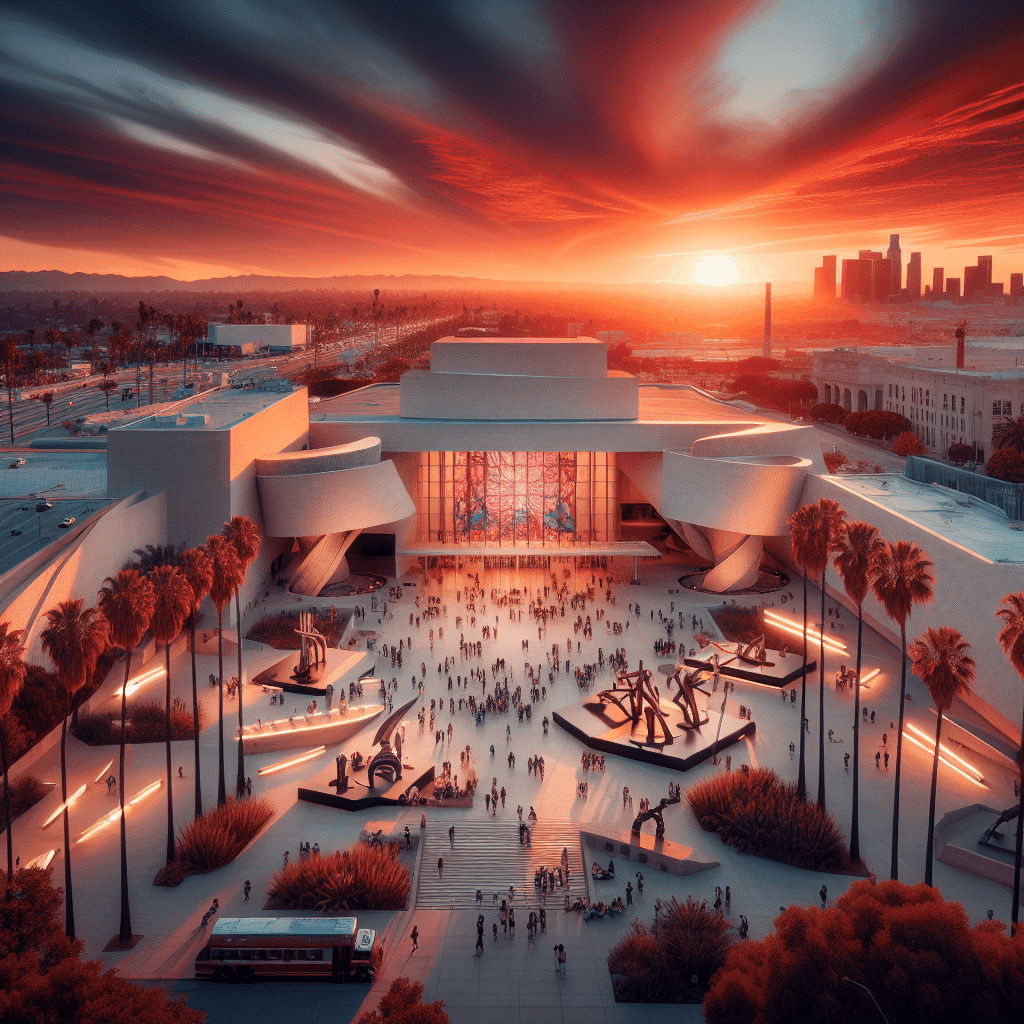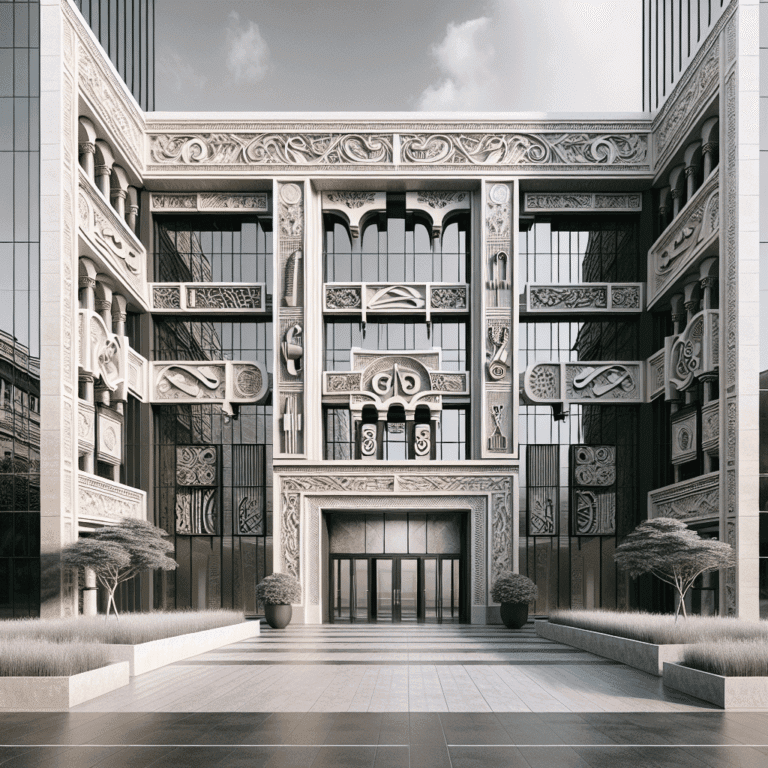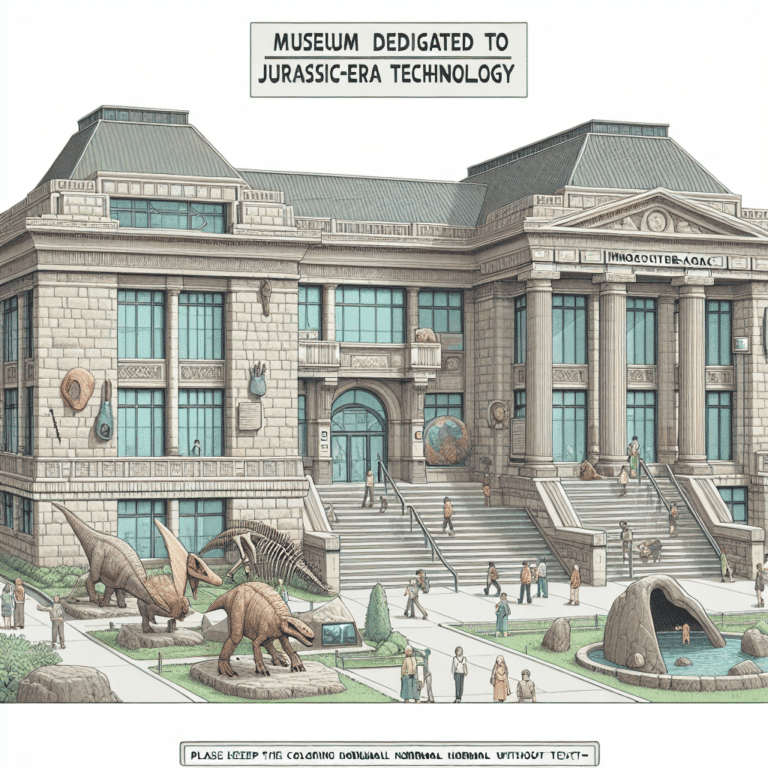Walking Through History: My Unforgettable Day at Los Angeles Museum
Exploring the Los Angeles Museum of the Holocaust
History and Mission
Visiting the Los Angeles Museum of the Holocaust was an unforgettable experience that deepened my understanding of a significant part of history. Established in 1961, this museum holds the distinction of being the oldest survivor-founded Holocaust museum in the United States. Founded by Holocaust survivors and members of the local Jewish community, it offers a unique perspective on the events of the Holocaust. The museum’s mission is to uphold the memories of Holocaust survivors and ensure that the atrocities committed during this time are never forgotten (Los Angeles Museum of the Holocaust).
The museum serves as a vital historical resource and memorial, dedicated to educating visitors about the Holocaust and promoting tolerance and understanding among diverse audiences. Its commitment to preserving history resonates throughout the exhibits and programs, making it a crucial stop for anyone interested in learning more about this dark chapter.
Educational Initiatives
The Los Angeles Museum of the Holocaust offers a variety of educational initiatives aimed at students, educators, and the general public. These programs focus on teaching the history of the Holocaust, promoting tolerance, and inspiring social action (Los Angeles Museum of the Holocaust). I was excited to learn about the different ways the museum engages with its audience to create meaningful learning experiences.
| Program Type | Description |
|---|---|
| Exhibitions | The museum features various exhibits showcasing artifacts, survivor stories, and historical information. |
| Outreach Programs | These programs aim to extend the museum’s educational efforts beyond its walls, reaching schools and communities. |
| Workshops | Interactive workshops for students and educators help deepen understanding of Holocaust history and its relevance today. |
These initiatives play a crucial role in fostering a deeper understanding of the Holocaust and its implications in the modern world. By providing educational resources and opportunities for engagement, the museum ensures that the lessons of the past are not only remembered but also actively integrated into discussions about tolerance and human rights.
For those looking to explore more about history in Los Angeles, the Los Angeles Museum of the Holocaust stands out as an essential destination among the best los angeles museums.
Engaging Programs and Exhibitions
At the Los Angeles Museum of the Holocaust, I discovered so many exciting programs and exhibitions that truly brought history to life. Two of the standout offerings were the Generation to Generation program and the Virtual Field Trips.
Generation to Generation Program
The Generation to Generation program captivated me as it connects Holocaust survivors with students. This initiative ensures that the memories and lessons of the Holocaust are preserved and shared with younger generations. It’s a powerful way to honor the experiences of those who lived through such a challenging time. Students get to hear firsthand accounts, fostering a deeper understanding of history and encouraging empathy. This personal connection makes the past feel more relevant and immediate.
| Program Feature | Description |
|---|---|
| Target Audience | Students and educators |
| Format | Survivor talks, interactive discussions |
| Goals | Share personal stories, promote understanding of the Holocaust |
For more insights into how this program works, you can learn more from the United States Holocaust Memorial Museum.
Virtual Field Trips
The Virtual Field Trips offered by the museum were another highlight of my visit. These virtual experiences extend the museum’s reach far beyond physical visitors, allowing anyone to engage with the exhibits and educational content online. Each virtual field trip is designed for various grade levels and includes interactive activities, media presentations, and survivor testimonies. This engaging format makes learning about the Holocaust accessible and impactful for students everywhere.
| Virtual Field Trip Feature | Description |
|---|---|
| Audience | Distant learners, classrooms |
| Content | Interactive activities, media presentations, survivor testimonies |
| Educational Focus | Holocaust, World War II, and other genocides |
The museum’s commitment to education shines through in every aspect of these virtual experiences, providing valuable resources for educators. They even offer teaching guides, lesson plans, and primary source materials on their website, making it easier for teachers to integrate Holocaust education into their classrooms (Los Angeles Museum of the Holocaust).
Exploring these programs made my visit truly unforgettable, and I highly recommend checking them out. Whether you’re a student, educator, or just someone interested in history, the Los Angeles Museum of the Holocaust has something valuable to offer.
Impact and Outreach
Community Engagement
During my visit to the Los Angeles Museum of the Holocaust, I was truly impressed by their commitment to community engagement. The museum actively connects with local communities through various programs designed to foster understanding and compassion. One standout initiative is the Generation to Generation program, which pairs Holocaust survivors with students. This unique connection helps ensure that the powerful stories and lessons of the Holocaust are passed down to younger generations.
The museum also offers educational programs for over 30,000 students annually, making it a pivotal resource for teaching the history and significance of the Holocaust (United States Holocaust Memorial Museum). These initiatives not only educate but also inspire critical reflection on the past, encouraging visitors to engage in meaningful dialogue about history’s impact on our present and future.
Educational Resources
The educational resources available at the Los Angeles Museum of the Holocaust are extensive and thoughtfully designed. The museum serves as a vital historical resource and memorial, dedicated to upholding the memories of Holocaust survivors and ensuring that the atrocities of the Holocaust are never forgotten (Los Angeles Museum of the Holocaust).
Here’s a brief overview of the educational resources offered:
| Resource Type | Description |
|---|---|
| Guided Tours | In-depth tours led by knowledgeable guides who provide context and insights on the exhibits. |
| Workshops | Interactive sessions designed for students and educators to explore Holocaust history and its relevance today. |
| Online Resources | A variety of digital materials available for research and learning about the Holocaust. |
These resources are tailored not just for students but for families and individuals seeking to deepen their understanding of this significant history. For anyone interested in exploring more about museums in Los Angeles, I highly recommend checking out other notable venues like The Getty Center and LACMA.
Physical and Virtual Experiences
Visiting the Los Angeles Museum of the Holocaust is an incredible experience that I will never forget. The combination of its physical presence and virtual offerings makes it accessible and engaging for everyone.
Location and Facilities
The museum is located in Pan Pacific Park, right in the Miracle Mile district of Los Angeles. This vibrant area is perfect for a day of exploration. The museum’s physical space is thoughtfully designed, showcasing artifacts, documents, and exhibitions that provide deep insights into the Holocaust and the lessons to be learned from it. I was particularly moved by the permanent exhibitions featuring photographs, documents, and videotaped testimonies that reveal the personal stories behind this significant historical event. The best part? Admission is free, making it an accessible option for all visitors. You can learn more about the museum’s history and mission here.
| Feature | Description |
|---|---|
| Location | Pan Pacific Park, Miracle Mile, Los Angeles |
| Exhibitions | Artifacts, photographs, documents, and testimonies |
| Admission | Free |
| Mission | Engage the public on Holocaust history |
Online Exhibitions
In addition to the physical experience, the Los Angeles Museum of the Holocaust offers a range of online exhibitions and resources. These digital initiatives enable the museum’s educational content to reach a global audience, extending its impact beyond the physical location. I found the online exhibitions to be both informative and immersive, allowing me to explore the history and lessons of the Holocaust from the comfort of my home. The digital collection includes photographs, documents, and videos that provide a comprehensive overview of the Holocaust. I highly recommend checking out these resources if you can’t visit in person. For more details, visit the museum’s exhibits page.
By combining physical and virtual experiences, the Los Angeles Museum of the Holocaust makes history accessible and meaningful. Whether exploring the museum in person or delving into its online offerings, I felt a strong connection to the stories and lessons of the past. If you’re looking for a place to experience history, this museum should definitely be on your list of best Los Angeles museums.
Commemoration and Remembrance
Visiting the Los Angeles Museum of the Holocaust is not just about viewing exhibitions; it’s an experience deeply rooted in commemoration and remembrance. The museum serves as a commemorative space for the 6 million Jewish victims and millions of other victims of the Holocaust (LAMOTH). I found this dedication to honoring those who perished to be incredibly moving.
Memorial Functions
The museum hosts memorial functions that allow visitors to pay their respects and reflect on the tragedies of the Holocaust. These events often include moments of silence, lighting candles, and sharing survivor stories, creating an atmosphere of collective remembrance. Attending one of these functions, I was struck by the emotional weight they carry, reminding all of us of the importance of history in shaping our present and future.
| Memorial Function | Description |
|---|---|
| Annual Holocaust Remembrance Day | A day of reflection with speakers and survivor testimonies. |
| Special Commemorative Events | Occasional events focused on specific themes or anniversaries. |
Special Events
In addition to memorial functions, the museum organizes special events throughout the year. These events range from educational workshops to guest lectures featuring Holocaust survivors and historians. Participating in these events enriches my understanding of the Holocaust and provides a platform for dialogue and education.
| Special Event | Description |
|---|---|
| Art & Memory Program | Connects survivors with teenagers through creative expressions. |
| Guest Lectures | Features insights from historians and experts in Holocaust studies. |
The museum aims to honor those who perished, educate the public, and preserve the testimonies and artifacts of survivors (LAMOTH). I encourage anyone interested in history to participate in these meaningful experiences. If you’re looking for other engaging places in Los Angeles, don’t miss out on the best los angeles museums to further enrich your cultural journey.
Collaborative Partnerships
Educational Collaborations
One of the most exciting aspects of my visit to the Los Angeles Museum of the Holocaust was learning about their extensive educational collaborations. The museum offers a variety of programs designed to engage students of all ages and backgrounds. They provide guided tours tailored to meet California State’s curriculum standards, ensuring that students gain a meaningful understanding of the Holocaust’s impact (Los Angeles Museum of the Holocaust).
Additionally, the museum has launched creative initiatives such as the “Art & Memory” program, which connects Holocaust survivors with teenagers. This program allows participants to explore their heritage and share survivor stories through various art mediums like film, theater, and photography. This interactive approach makes history come alive in a way that resonates with younger audiences.
The museum also offers professional development opportunities for educators, including workshops and seminars. These programs enhance teachers’ knowledge and skills in effectively teaching about the Holocaust and genocide, further enriching the educational experience for students.
| Educational Program | Description |
|---|---|
| Student Education Tours | Customized tours for various age levels. |
| Art & Memory | Connects survivors with teens through art. |
| Professional Development | Workshops for educators on Holocaust education. |
Community Events
The Los Angeles Museum of the Holocaust also actively engages with the community through a variety of events. They host public programs that include free admission for all students and California residents. I was thrilled to see that the museum offers self-guided tours with a free audio guide, as well as guided tours led by staff and knowledgeable docents.
One of the standout initiatives is the “Building Bridges” series, launched in 2020. This cross-cultural discussion series brings leaders from diverse communities together to converse about common social justice goals. This is a fantastic opportunity for individuals from different backgrounds to engage in meaningful dialogue about history and its relevance today.
The museum also organizes film screenings, concerts, and conversations with Holocaust survivors. These events provide a platform for firsthand accounts and promote a greater understanding of the past. The combination of educational initiatives and community events makes the museum a vibrant place for learning and reflection.
| Community Event | Features |
|---|---|
| Building Bridges Series | Cross-cultural discussions on social justice. |
| Conversations with Survivors | Personal narratives shared with the public. |
| Film Screenings | Showcasing relevant documentaries and films. |
Visiting the Los Angeles Museum of the Holocaust was not just about absorbing historical facts; it was about experiencing a community dedicated to remembrance, education, and dialogue. For anyone looking to explore the rich history of this important topic, the museum is a must-visit destination in Los Angeles. To discover more amazing spots in the area, check out our list of the best los angeles museums.
Preserving History and Lessons
The Los Angeles Museum of the Holocaust is a remarkable place where history comes alive through its extensive artifact collections and dedicated Holocaust education initiatives. My visit was enlightening as I delved into the stories encapsulated within the exhibits.
Artifact Collections
At the museum, I was captivated by the permanent exhibitions showcasing a variety of artifacts, photographs, documents, and videotaped testimonies. These items provide a comprehensive overview of the Holocaust, allowing me to grasp the gravity of the events that transpired. The museum also has a digital collection accessible to visitors, making it easier to explore the history from the comfort of home. For those unable to visit in person, these online resources are invaluable (Los Angeles Museum of the Holocaust).
| Type of Artifact | Description |
|---|---|
| Photographs | Visual documentation of the Holocaust and its impact |
| Documents | Historical records that provide context and details |
| Videotaped Testimonies | Personal stories from survivors that bring the history to life |
Holocaust Education
The museum is committed to Holocaust education, offering guided tours for groups of all sizes, school-based programs, and educational resources tailored to various age groups (Los Angeles Museum of the Holocaust). I found the tours to be engaging and informative, catering to the needs of both adults and children. The museum aligns its educational content with California State’s curriculum standards, ensuring that students receive relevant and impactful learning experiences.
One of the standout programs is “Art & Memory,” which connects Holocaust survivors with teenagers. This program allows young people to learn about their heritage, retell survivor stories, and express themselves through art mediums like film and photography (Wikipedia). Such initiatives foster a deeper understanding of history and its implications for contemporary society.
Through its artifact collections and educational efforts, the Los Angeles Museum of the Holocaust plays a crucial role in preserving history and imparting important lessons for future generations. Whether exploring the artifacts in person or engaging with the educational resources online, visitors can gain profound insights into this significant chapter of history. If you’re looking for more enriching experiences, consider visiting other remarkable locations like the California Science Center or the Los Angeles County Museum of Art (LACMA).
Visitor Experience
Visiting the Los Angeles Museum of the Holocaust was nothing short of inspiring. The experience was enriched by the various offerings, particularly the guided tours and interactive activities that cater to visitors of all ages.
Guided Tours
The museum offers guided tours for groups of all sizes, making it easy to explore the rich history and impactful stories shared within its walls. I joined a guided tour that provided a deep dive into several exhibitions, including “History of the Holocaust” and “The Generation After”. The knowledgeable guides shared personal anecdotes and historical context that made the experience even more profound. Each tour is designed to engage visitors in meaningful ways, encouraging a deeper understanding of the Holocaust and its lasting effects.
Here’s a quick overview of the guided tour options:
| Tour Type | Duration | Group Size | Highlights |
|---|---|---|---|
| General Tour | 1-2 hours | Up to 30 people | Overview of key exhibitions |
| School Program | 1-2 hours | Up to 50 students | Tailored educational content |
| Special Events | Varies | Depends on event | Unique themes or guest speakers |
For more information on tours and scheduling, check out the museum’s official website.
Interactive Activities
In addition to guided tours, the museum features interactive activities that make learning engaging for individuals and families. I found the “Tree of Testimony” particularly moving. This interactive installation allows visitors to listen to personal stories from Holocaust survivors. It was a powerful way to connect with history on a personal level.
The museum also provides virtual resources and online exhibitions, making it easier for people to engage with the content from anywhere. These digital initiatives allow for global accessibility, ensuring that the lessons of the Holocaust reach a wider audience. For anyone who can’t visit in person, the online content is a fantastic alternative.
Visitors can also explore educational resources designed for teachers, which include virtual field trips and survivor talks. These resources are invaluable for understanding the broader implications of the Holocaust, World War II, and other genocides. To learn more about these educational initiatives, visit their educator resources page.
Overall, the combination of guided tours and interactive activities created an unforgettable experience. The Los Angeles Museum of the Holocaust truly brings history to life, making it a must-visit for anyone interested in learning more about this vital chapter in our shared past.







